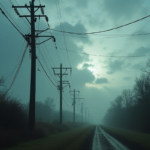Building a survival cabin is one of the most fulfilling and practical projects you can undertake. Whether you’re preparing for an off-grid lifestyle, a weekend retreat, or a safety net for uncertain times, a well-constructed cabin can offer security, peace, and independence. Let’s dive into the essentials of planning, designing, and building your perfect long-term survival shelter.
Why a Survival Cabin Matters
A survival cabin is more than just a structure; it’s your fortress in times of need. With natural disasters, economic uncertainties, or simply the desire to live sustainably on the rise, having a dedicated, reliable space ensures you’re prepared for the unexpected. A survival cabin offers:
- Protection from harsh weather.
- A sustainable, self-sufficient lifestyle.
- A fallback option during emergencies.
By building a cabin tailored to your needs, you invest in your family’s safety and peace of mind.
Choosing the Perfect Location
When planning your survival cabin, location is everything. You’ll need a balance of safety, accessibility, and resources. Here’s what to consider:
- Proximity to Water: Ensure access to a clean water source, such as a stream, river, or well.
- Seclusion vs. Accessibility: Strike a balance between privacy and proximity to essential services or emergency escape routes.
- Local Resources: Look for areas rich in timber, stone, or other natural materials for construction and maintenance.
- Climate Suitability: Choose a region with manageable weather conditions for your family’s comfort and survival.
Taking time to survey the land and understand its quirks ensures a long-term investment in safety and comfort.
Essential Design Elements
The structure of your survival cabin should be sturdy, practical, and efficient. Focus on these elements:
Foundation
A strong foundation is key to a durable cabin. Depending on the terrain, you might opt for a concrete slab, pier and beam, or a full basement. A well-laid foundation prevents structural issues and provides storage for supplies.
Materials
Locally-sourced wood, stone, and metal ensure durability while reducing costs. Opt for treated wood to prevent rot and pests. Recycled materials like metal roofing can add both eco-friendliness and resilience.
Insulation and Ventilation
For long-term comfort, proper insulation is non-negotiable. Use materials like spray foam, wool, or fiberglass to retain heat in the winter and cool air in the summer. Don’t forget ventilation to prevent moisture buildup and ensure fresh air circulation.
Off-Grid Systems for Independence
A survival cabin should be self-sufficient. Invest in off-grid systems that provide the essentials:
- Water Supply
Install a well with a manual pump or rainwater collection system. Purification options like UV filters or distillation kits are also vital. - Energy Sources
Solar panels, wind turbines, or a micro-hydro generator ensure reliable electricity. Combine this with a backup generator for emergencies. - Heating and Cooking
Wood-burning stoves or propane heaters are efficient for heating and cooking. Add a solar oven for sunny days. - Waste Management
A composting toilet and a greywater recycling system keep your cabin eco-friendly and functional.
Stocking Up for Survival
A survival cabin without essential supplies is just a house. Stock it with long-term items:
- Food: Dried, canned, and freeze-dried foods with long shelf lives.
- Medical Supplies: First-aid kits, medications, and antibiotics.
- Tools: Axes, saws, hammers, and a multi-tool.
- Clothing and Bedding: Warm, durable options for all seasons.
Rotate your stockpile regularly to ensure everything stays fresh and functional.
Maintaining Your Cabin
Once your survival cabin is built, regular maintenance keeps it ready for any situation. Inspect the roof, foundation, and exterior for damage every season. Check your off-grid systems and make necessary repairs. By staying proactive, you’ll ensure your cabin is always a reliable safe haven.
Also see: DIY Gear for Food and Water: Essential Projects for Self-Reliance



